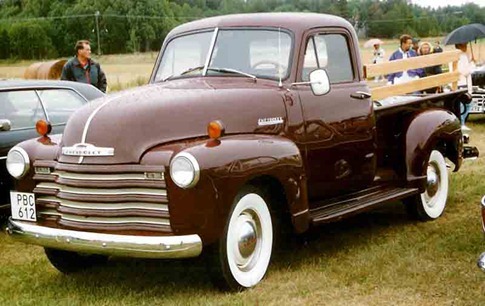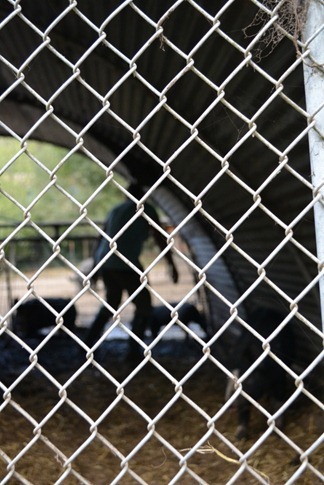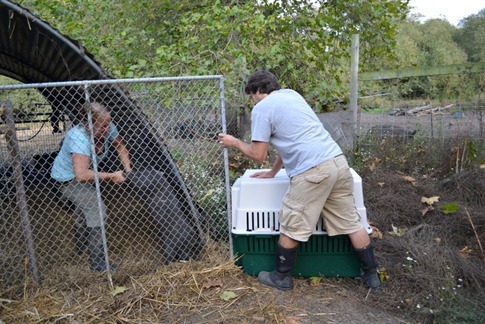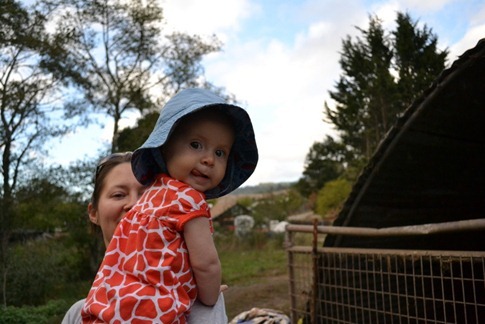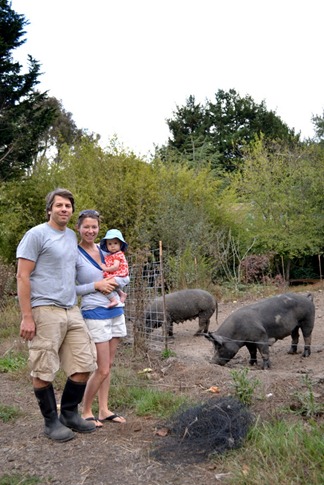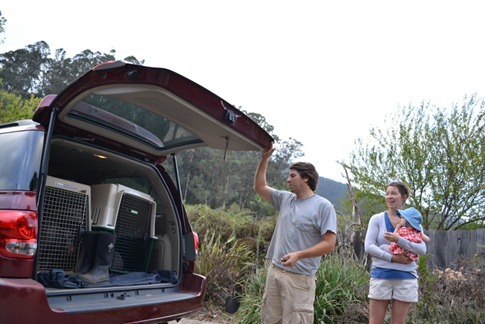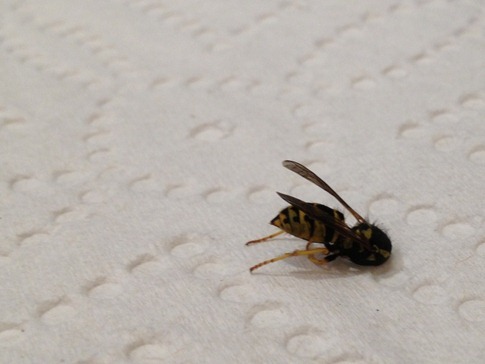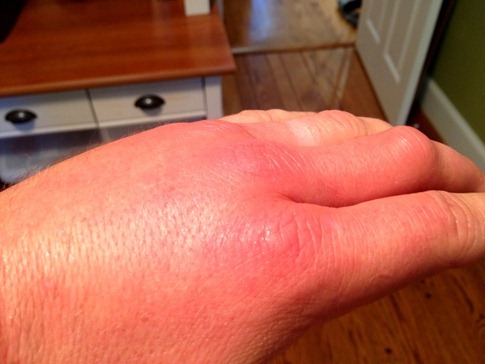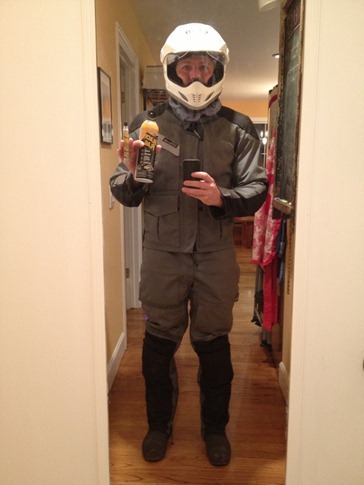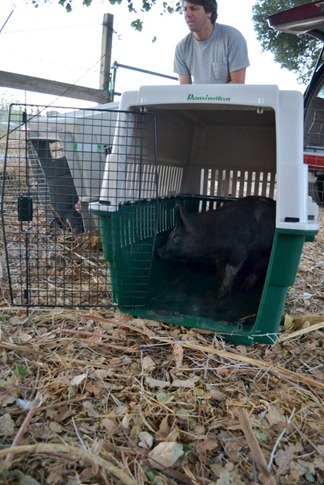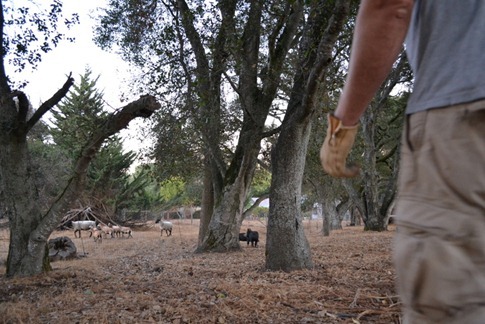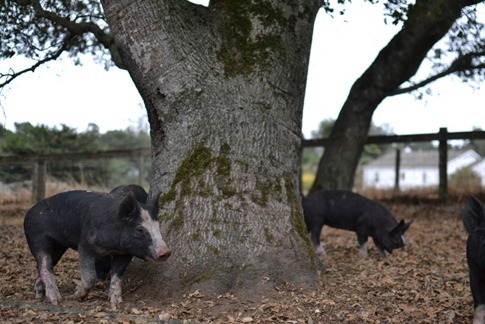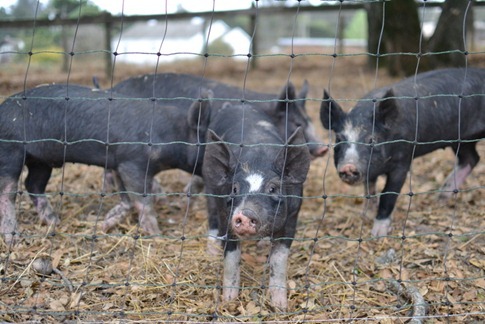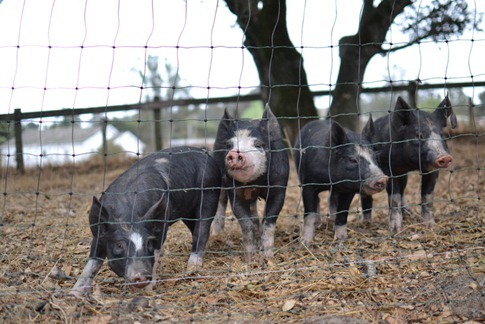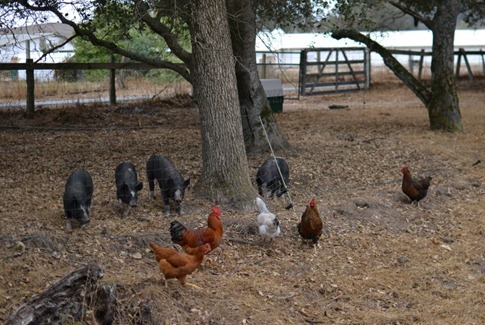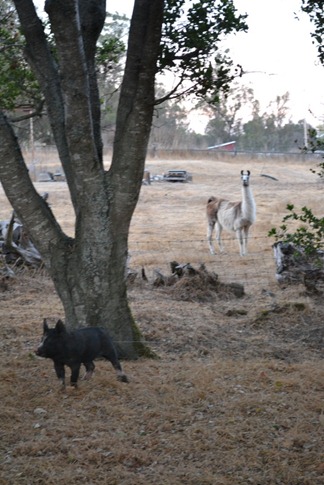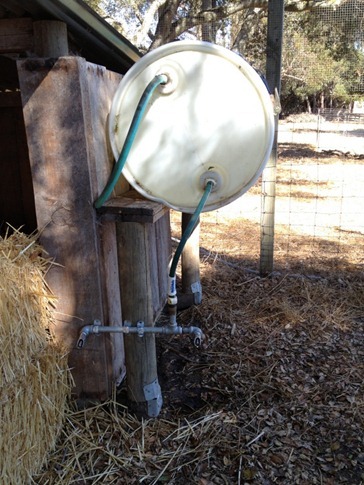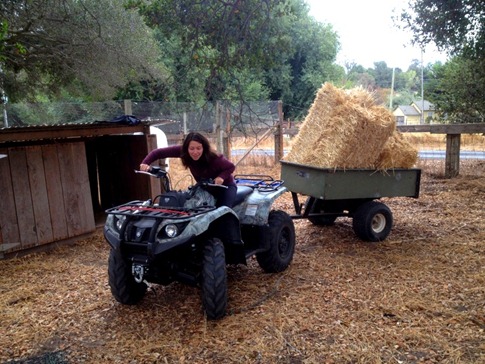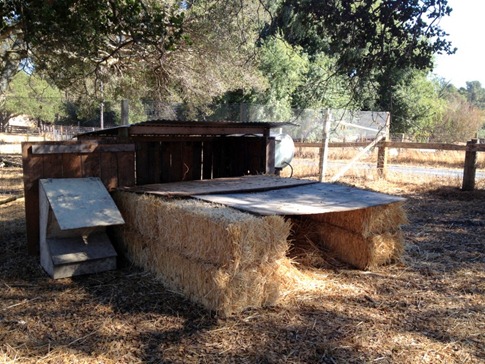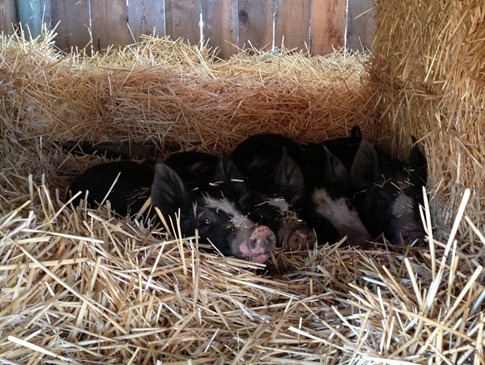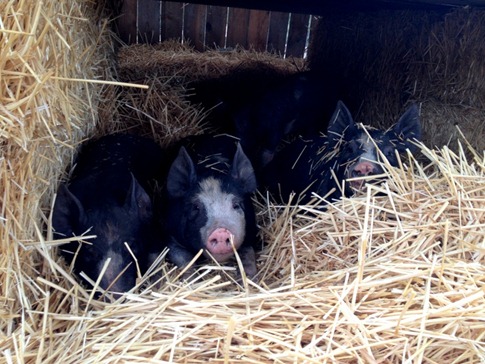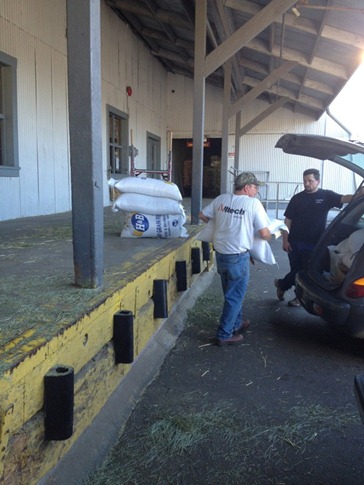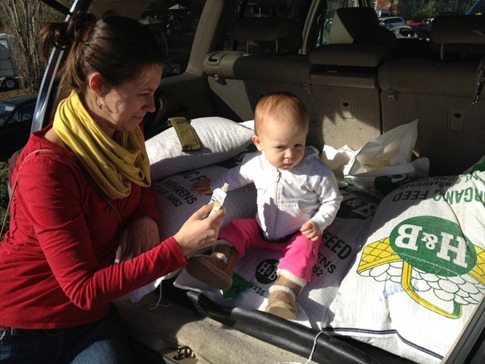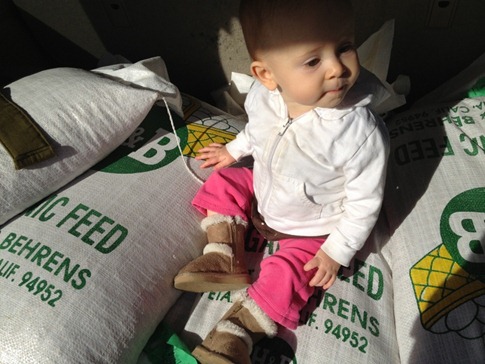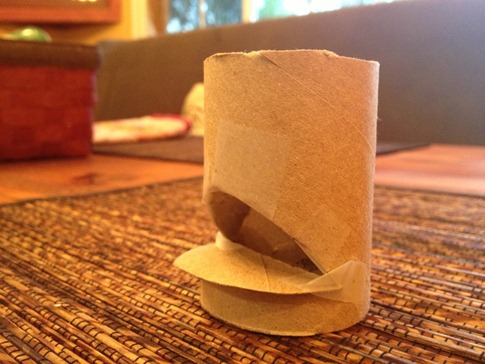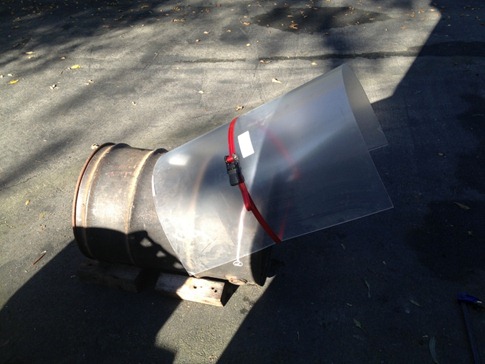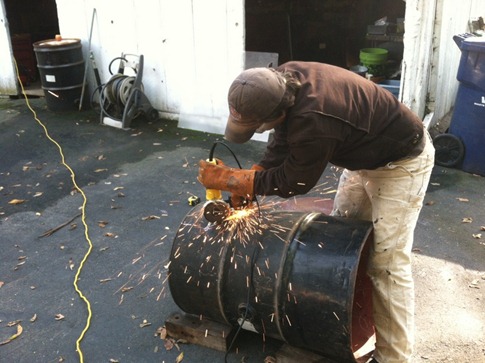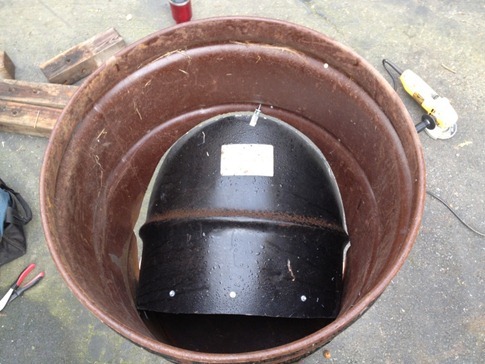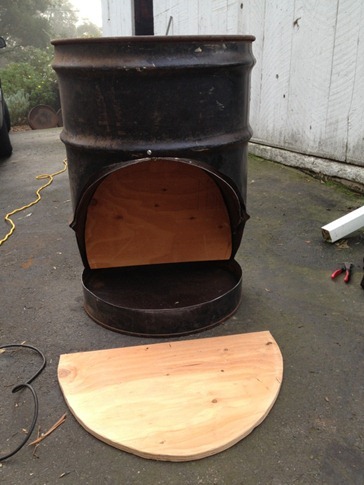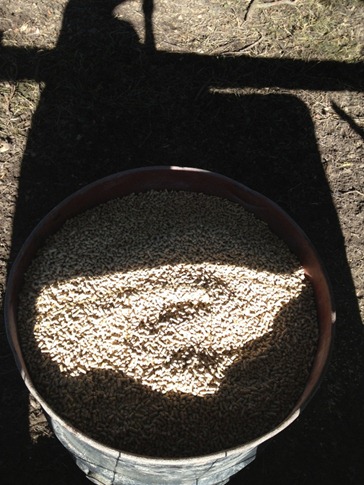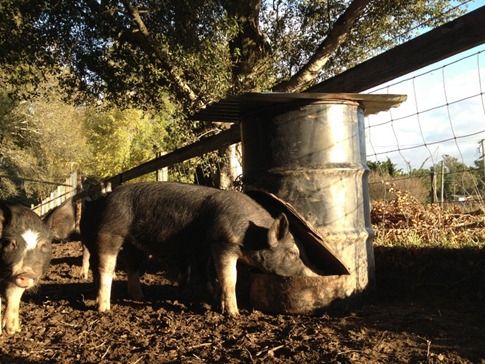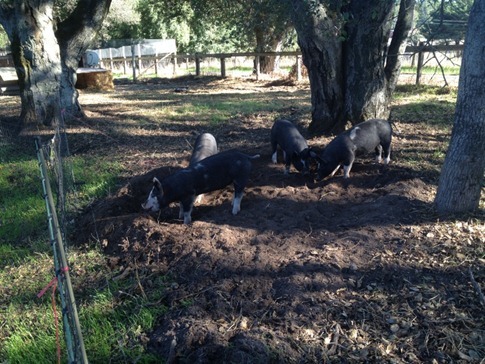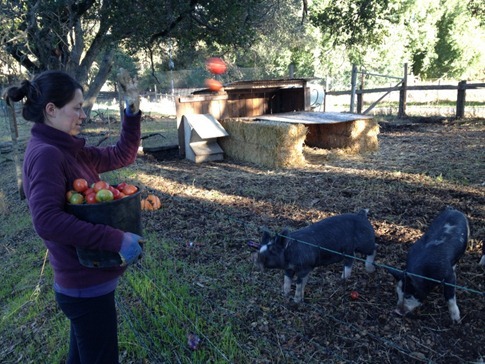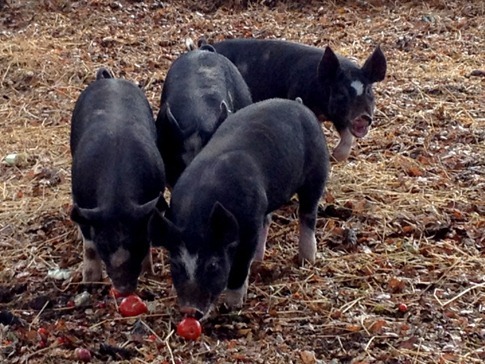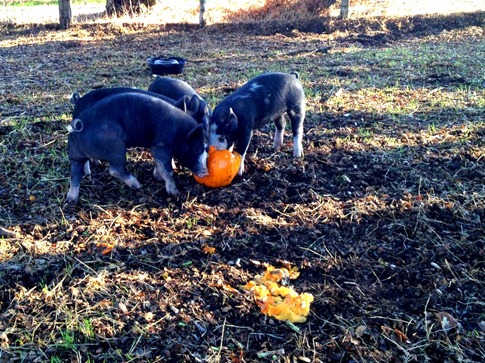While it turns out that rumors of a global bacon shortage were largely exaggerated, we had such a good experience raising two Berkshire pigs and having them processed for the freezer last year, we decided to do it again. In fact, after a lot of inquiries from friends and family about getting some pork for themselves, this year we called our “pork pimp” – actually a homesteady family living out near the coast between Bolinas and Pt. Reyes – and asked her hold onto four for us. I’m glad I called early too, since she said someone was coming the day before us to pick up ten!
As the pick up date approached - the piglets would now be 8 weeks old and about 50 pounds - I started to look into options for getting them home. While I tried my hardest to use the opportunity to “necessitate” the purchase of this…
I mean, how good would that look with a pork-tet of prized hogs in the back?!
… I ultimately decided that a second XL dog kennel like the one we’d used to transport the piglets last year would work (for now). I closed the browser window listing 1946-1954 pickup trucks and quickly located a VariKennel for sale nearby in Santa Rosa. When I arrived at the address I’d been given, the first thing I noticed was a doormat with a pig on it. Inside were more pig themed decorations. Before I knew what I was saying, I made a comment, “I’m actually buying this kennel to go pick up some pigs.” She got very excited and told me that she loved pigs and always hoped to get one. I had a feeling she didn’t mean for the tenderloin, chops and bacon, so I quickly changed the subject.
After confirming that both XL kennels would fit side by side in the cavernous cargo area of the 2006 Toyota Sequoia to which we’d recently reluctantly upsized (and down-mileaged - that’s a thing, right?) to better tow our 19’ Airstream, we arranged to pick up our porkers on a Friday morning. Last year, Karen and her husband had just started selling piglets, and it was he who had led us back to the pig paddock to wrestle them into the crates. This year, Karen pulled back the heavy hog wire panel and stepped into the galvanized hoop shelter to persuade our piglets into the carriers. While I bravely held the kennels steady, she bobbed, weaved and head-faked until she could grab each one by the hind legs and walk them wheelbarrow-style to the door.
Thanks to our friend Nina Brandin who came along for the ride for many of the pics!
Wynne, of course, supervised the whole operation.
The breeding pair. I’m talking about the pigs here, people…
With four piglets loaded up, we shut the rear hatch and strapped the baby into her car seat. Only then did we remember the smell of pig shit in an enclosed vehicle. We drove the 35 minutes home with the windows open.
The week before, I’d started the process of preparing the pig enclosure. Last year, we’d arranged one of our 164’ wire mesh electric fences (with an additional single strand hot wire about snout height) in a square along one side of our property. After a couple months, the two pigs had rooted just about every inch, and we moved the entire enclosure just up the fence line to give them some fresh ground. This year, we not only wanted them to have some more room but to give that land a rest from the abuse and decided to set up the pig enclosure even farther up the fence.
As I was unrolling the last 10 feet or so of the electric mesh in the upper area, I noticed a few buzzing insects flying in and out of a hole at the base of a tree. Now, Ann and I have been talking a lot about setting up a bee hive for the honey and the pollination benefits so I knew very well that these humble workers would not sting me unless they felt threatened. I cut a wide path around their home and completed my fence run. I took an even wider detour on the way back, walking about 15 feet away from the entrance and over a small pile of brush I’d put aside after some clearing that summer.
When I felt the first sting on my elbow, I looked over towards the entrance at the base of the tree I’d carefully avoided and thought “Hey, what the hell? I thought we were cool!” I felt the second sting on my upper arm and began to realize my first critical miscalculation; These were not docile bees but rather aggressive yellow jackets, fiercely protective of their nest. I wouldn’t realize my second error for several days; More on that to come. The urge to run was uncontrollable though I quickly came to understand the irony of the fact that I had just completed fencing myself in. With my lead Muck boot pointed towards open ground and my other tucked close in under the seat of my Carhartts, I hurdled the fence with surprising agility. Now maybe 50 feet from the nest, I felt the third sting, this time on my head. I started picturing every bee sting sequence in every movie I’d ever seen with some poor schmuck running madly through the woods flailing his arms wildly. Why in the hell didn’t we have a pond I could jump into (possibly breathing underwater through a reed I’d plucked from the bank)?! I made it the 200 feet to the pump house and the nearest hose in record time and started spraying my head with the nozzle and combing my fingers through my hair. Stings four and five were on my hand and number six on my head before the excitement subsided.
I came inside through the mudroom, slipped off my boots and walked into the living room where I found Ann sitting on the couch with Wynne. She knew enough to suspect that there was a story behind my wet, tussled hair, shortness of breath and wide eyes, and when I told it, had the same thought I was having; The last time I’d been stung multiple times was by fire ants in a campground outside of Palenque in Chiapas, Mexico, and I’d quickly developed hives all over my body. After a Benadryl, I took a cool shower - reminiscent of my dips in the mineral waters of Agua Azul and the jungle pool at the Mexican campground - to slow the reaction. With one final yellow jacket washed out of my hair and circling the shower drain, I sat down to wait. While the hives did develop to some extent, the worst was the swelling in my hand which started inflating like a balloon.
After an extensive web search, my plan for revenge took shape. No, I didn’t follow the advice of those suggesting I pour a gallon of gasoline down the nest entrance although, to their credit, almost half of the respondents did not recommend throwing a match in after it. Instead, I’d launch an attack in the cold dark of sunrise, when the nest would be inactive, armed with can of RAID foaming poison boasting a spray range of 29 feet. Oh, and at the insistence of my wife and mother, with protective gear and an EpiPen.
After sequential early morning raids (pun intended), I wandered out one afternoon to examine the results of my scorched earth campaign and to finish setting up the fence for the pigs. The entrance was still. No sign of any of the nasty little buggers coming in or out. But for some reason, I had an eerie feeling. I walked out of the fenced enclosure the way I’d come in, went out the side gate of the property and walked around the far side of the brush pile where I’d been stung. At first, I didn’t see anything, but then the first one came into focus. And the second. Then tens of them flying in and out of a hole tucked deep into the tangle of twigs. My second error on the day I’d been stung was that, while thinking I was giving the nest a wide birth, I’d actually been trampling directly on top of another entrance. Fortunately, I’d narrowly avoided making a third mistake – well, technically my second one all over – by tromping right back over the nest. Eh, on second thought, I think that land where we had the pigs last year has probably recovered enough to put them down there again. Using the non-electrified side fence in addition to the electric mesh, I was able to double their area to over 100’ long and 50’ wide.
After the long, curvy drive home, you’d think the first thing these little piglets would want to do is get out of the kennels, but I had to lift the ends to practically pour them out the open doors onto the pasture. Once they regained their footing, they quickly went about exploring their new surroundings.
Of course, everyone else had to come over to see the new arrivals while the protector, Michelle Ob’llama kept a watchful eye.
Last year, I’d built a 4’ x 8’ shed with a galvanized roof out of planting boxes reclaimed from a local mushroom farm and rigged a 55 gallon plastic barrel with some gravity fed water nipples that the pigs could activate with their tongues. The problem was that I had to refill the barrel periodically leading to some adventures with a dangerously overloaded ATV. My goal this year was to minimize or eliminate daily chores out at the pig paddock, so with careful positioning of the water barrel and the purchase of one more long hose, I was able to set up a garden timer to automatically top off the barrel every few days from a spigot by the greenhouse. With a little adjustment, I was able to figure out how often and how long the timer needed to run to keep up with their thirst. Of course, I couldn’t have anticipated that the mischievous little guys would unscrew one of the nipples letting all the water out and creating a great mud puddle for rolling around. Locktite has prevented a repeat.
A neighbor offered some extra bales of straw that made for a nice little annex on the shelter. Which gave Ann a chance to show off her skills at backing the ATV with the trailer anyway…
And the four little pigs seemed to think straw was a perfectly acceptable building material for their house (though full disclaimer: we don’t get a lotta hyperventilating wolves in these parts).
Refilling food had also been a regular chore last year, growing more frequent as the pigs went from eating about 2 pounds of food a day at 50 pounds to 7 pounds a day at 200. In addition to what they can get from the pasture, we’ve been offering them “free-choice” – as much as they want when they want it – organic pig feed. I’ll usually go down to the feed store and load up on eight bags. Unfortunately, there’s no volume discount until you basically have a silo at home.
We’ve found that having a few bags in the back of the car can make for a nice lounge for an on-the-go lunch.
[INSERT JOKE HERE ABOUT FEEDING YOUR PIGS ON PASTURE AND YOUR KIDS ON FEED]
Last year, I built a gravity feeder out of some 1/2” plywood that worked great. That is, until the pigs would deplete the 100 pounds of food it held and knock it over to get at the last crumbs, pretty much destroying it in the process. The farm supply stores sell more durable commercial feeders, but I thought I could probably build something just as good. Google searches lead me to this video and the concept of using a 55 gallon barrel with holes drilled on the sides that would let feed fall out when the pigs rolled it around.
Pretty cool, but in our case, the pigs would just push it against one of the electric fences and either knock the fence over or not be able to roll it away without getting buzzed. Instead, I came up with another idea to make barrel into a gravity feeder like the one I’d built before only with more capacity and much more durable.
While prototyping with a toilet paper roll, I realized that a wedge cut out of the side of the barrel could be fit back inside as a ledge that would channel feed towards the back.
A rolled piece of rigid plastic served as the template to make the cut that would mimic a cylinder intersecting another cylinder. I’m sorry, Mrs. Schiller, for ever doubting your claim that geometry would be useful to me in my later life!
A cut off disc on an angle grinder took care of the cut (and qualified me for baddassery badge for the day).
With the wedge flipped and fit into place, an angle bracket at the top and some screws at the corners secured it in place. My first approach filled any gaps with Bondo but I later went with an expanding foam.
A vertical piece of plywood formed the back of the “chute” the dropped the food into the lower bin and a horizontal one was hinged as a cover the pigs could flip up with their snouts.
Topped off with 200 pounds of food…
… the pigs knew exactly what to do!
When not eating from the feeders, these guys have been having fun rooting the soil with their incredibly powerful snouts. Before long, this entire area will have been turned over to fresh soil, a valuable process for the land.
And of course, they get the occasional treat from the garden…
Or front porch.
After 5 months or so of the good life, the pigs will be up around 200-220 pounds. Honestly, they start getting a little scary at that size, snorting and sprinting excitedly around their area when they see one of us approach with a bucket of kitchen scraps. And you can bet more than one friend forwarded me the news article about the Oregon man eaten by his pigs.
For now, we’re enjoying having them around and feel good about the life they’d lead before becoming a year-long supply of meat for our family and a few friends that we can personally take responsibility for.

